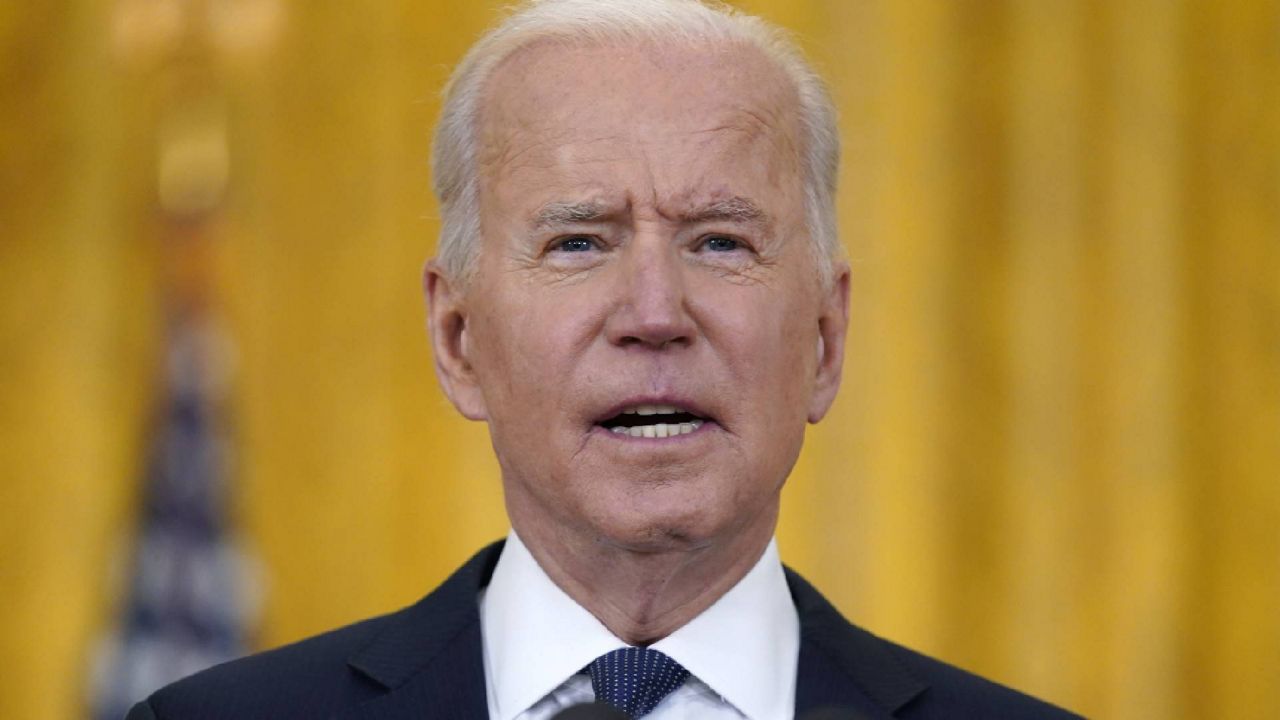The Biden administration will make available on Monday the $350 billion for state, local, territorial, and Tribal governments allocated in the COVID-19 relief bill in an effort to speed post-pandemic economic recovery, including by rehiring thousands of government employees laid off in the past year.
The money was allocated as part of the American Rescue Plan, the COVID-19 relief bill passed in March, and Congress set a goal of May 10 for the Department of Treasury to ready the funds for distribution.
Republicans and moderate Democrats had criticized the inclusion of the funding, some calling it an effort to bail out mismanaged governments and others disapproving of how the money would be allocated.
President Joe Biden highlighted the funding in remarks on the economy Monday afternoon.
"We need to stay focused on creating jobs and beating this pandemic today and building back better for tomorrow," the president said. "The American Rescue Plan is just that: a rescue plan. It's to get us out of the crisis and back on track."
On a call with reporters Monday, senior administration officials highlighted how state and local governments had been on the frontlines in responding to the pandemic and that most had lost revenue over the last year due to the economic impact of virus restrictions.
Starting Monday, states will be able to log on to a Treasury Department portal to begin requesting funds, and money should begin going out within days, a senior administration official predicted.
Every state will get $500 million in funding to start, and the rest is allocated based on the number of unemployed people in the state at the end of 2020. Most states will get more than $1 billion, and altogether, states will receive more than $195 billion.
The program is one year long, and funds will be distributed over time. Some states and jursidictions will get funding sooner, depending on economic factors outlined by the administration, while others will get it in two equal payments.
See a breakdown of funding by state here and city here.
The funding is intended to speed up recovery as areas of the country reopen, a lesson learned after the Great Recession, when economic growth was slow partly because state and local governments had shrunk and didn’t receive federal help right away, one official said.
The Treasury Department also released guidelines Monday afternoon that detail how governments are allowed to use the money, as dictated by Congress in the text of the COVID relief bill.
The money is not intended to make up for lost tax revenue in a state, for example, or to fund pensions. Officials will have to report back to the federal government how they used the money and there will be checks and balances, a senior administration official said.
One specific planned use for the money is to rehire government employees across the country.
State and local governments were forced to cut jobs at alarming rates as revenue decreased across the board, and many experts estimate upwards of 1.3 million local government employees — like firefighters, police officers, sanitation workers, and more — are still out of work.
In remarks Monday, President Biden said while not all of those jobs will be recovered immediately, the funding should help kickstart the process.
“The money we're going to be distributing now is going to make it possible for an awful lot of educators, first responders, sanitation workers to go back to work,” Biden said.
But states and localities have flexibility in how they can use the money, administration officials said Monday, including to directly support essential workers, small businesses, communities and industries hit hard by the virus or to support the continued COVID-19 response.
The funds can also be used to “invest in building, maintaining, or upgrading their water, sewer, and broadband infrastructure,” according to a Treasury Department fact sheet.
Take a look at the amount funding your state is expected to receive:
California - $27 billion
Florida - $8.8 billion
Kentucky - $2.18 billion
Massachusetts - $3.7 billion
New York - $12.74 billion
North Carolina - $5.43 billion
Ohio - $5.36 billion
Texas - $15.8 billion
Wisconsin - $2.53 billion
Cities will receive a total of $45.6 billion, counties will get $65.1 billion, Tribal governments $20 billion, territories $4.5 billion, and $19.5 billion is set aside for local areas of the country that aren’t included in the larger distribution of federal funding announced Monday.



